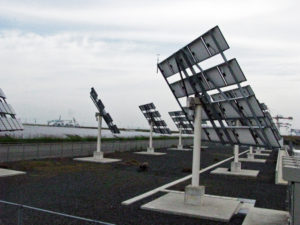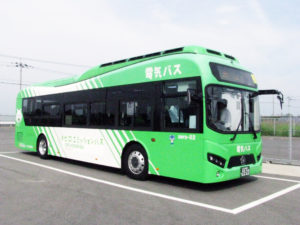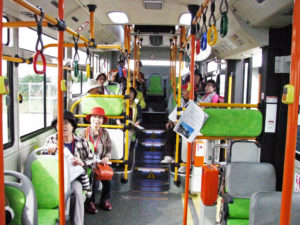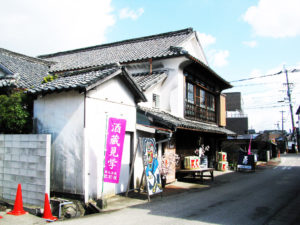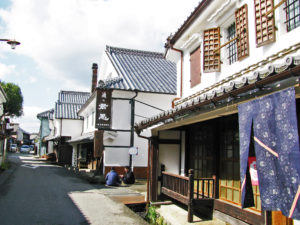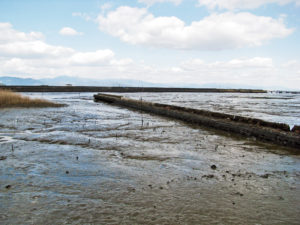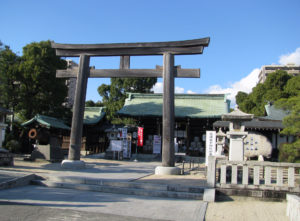Waste management & Recycling in Kitakyushu
By the 20th century, Waste was increasingly viewed also as a resource to recover
materials and energy.
Today, Waste management gradually evolved from a focus on disposal to a focus
on prevention, recycling and recovery for Global Environment protection and
our safety and healthy life.
Waste management and Recycling in Kitakyushu-city
In Japan, especially Kitakyushu-city is one of the most advanced municipality for
Waste management and Recycling.
The Solid Waste management process and procedure can be learned,
form Waste generation points, to collection of Waste, recycling and incineration and landfill.
One of the most important thing is Waste generation management ; how to collect and
separate the Solid Waste.
Kitakyushu has very unique waste management system that is source separation by public
participation which is an important component to increasing adoption of recycling.
Kitakyushu-city offer various opportunities of learning Solid Waste management and Recycling
for improvement of Environment in your country.
Featured facilities
Eco Project information center that supports the Eco-town. It introduces initiatives and activities
implemented in Eco-town to encourage people to proactively used the facility for such activities
as environmental study sessions and interaction amongst visitors.
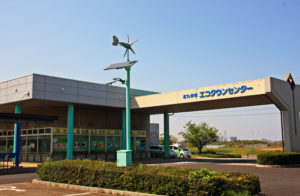 |
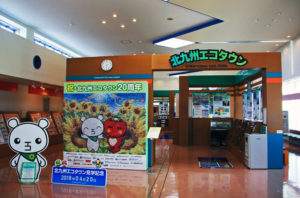 |
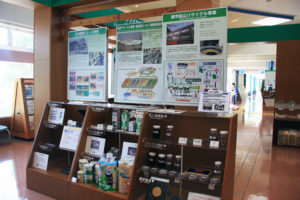 |
Zero Emission Transportation System
The Electric bus driven by the electricity generated by a solar power generation, therefor no global
warming gases emitted from the bus. Operation of the system is commenced in 2015.
The solar power generation plant, the power charging equipment and Electric bus can be observed.
|
Solar Power Generation for the Electric bus |
Electric bus |
On the Electric bus |
Waste treatment and Recycling
Plastic PET Bottle recycling / Nishi-Nippon PET Recycling
PET (polyethylene terephthalate) bottles are sorted by municipalities and recycled into
pellets and flakes, which can be used as raw materials for polyester fibers and egg cartons
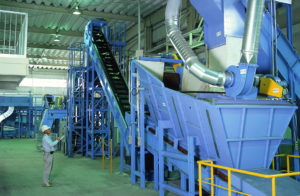 |
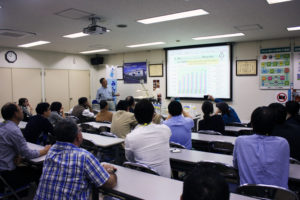 |
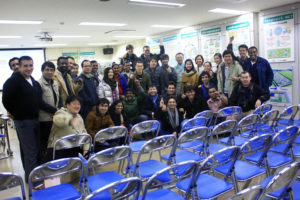 |
Melting Furnace / Sin-Moji Plant
The collected waste including metals is melted at over 1,700 degree Celsius in the Melting
Furnace and then the melted slag and metals are discharged.
The slag is used as raw materials for pavement and bricks and the metals are re-used for
other steel products. The process and technology of the Melting Furnace can be learned.
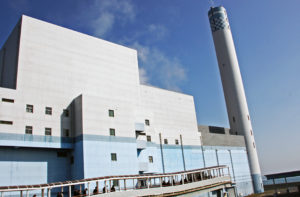 |
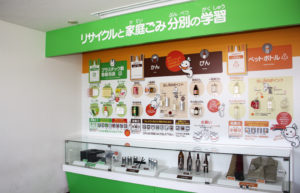 |
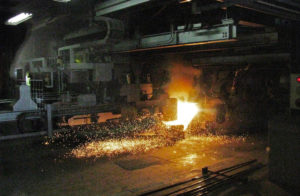 |
Waste paper recycling / Kyushu Seishi
Refined waste papers is recycled into toilet papers.
Sludge generated during the toilet paper production process is used to produce a
foaming inhibitor used by steel works.
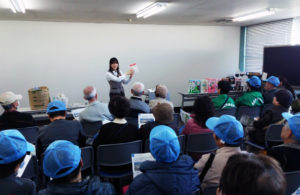 |
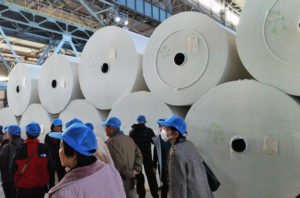 |
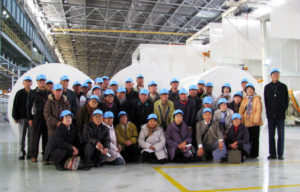 |
Food waste recycle / Merry Corporation
The food waste recycling company that the compost is being produced from food waste
discharged from food factories, hospitals, restaurants and municipal facilities.
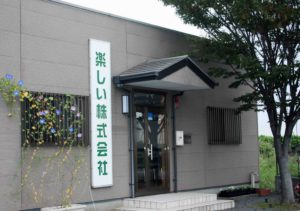 |
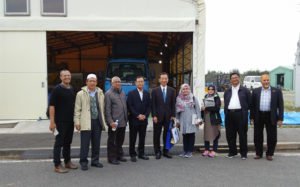 |
Your equiry can be sent by selecting the Enquiry Form link below.
You can also contact us by e-mail at info@japan-kyushu-tourist.com
Tel : +81-93-521-8897, Fax : +81-93-521-8898
Address : AIM buiding 6th floor, 3-8-1 Asano, Kokura-kitaku, Kitakyushu-city, Fukuoka-prefecture
One-day tour to Saga for Filipino customer
Country of customer : Philippines
Number of participant : 3 persons
Schedule : May 27, 2019
Transportation : the chartered Taxi with English speaking driver
Where to explore : Saga
 |
 |
 |
Itinerary
9:00 Leave at Nikko Hotel Fukuoka
Explore Yoshinogari Remains
Saga Castle History Museum
Lunch at Sata, Saga beef
Yutoku inari Shrine
17:30 Arrive at Nikko Hotel Fukuoka
International University of Japan Field trip in Nagasaki
Customer : International University of Japan
Participant : 22 International Studens and professor from Myanmar
Student countries of origin : Myanmer, Philippines, Indonesia. Laos
Schedule : March 23 through 26, 2019
Where to visit : Nagasaki
Tour conductor and interpretor ; Masa Kondo, Japan KYUSHU Tourist
Tour guide : English speaking guide
What to learn
Japanese industry at the end of 19th century was 200years behind.
After Mathew C Perry came to Japan in 1853, Japan’s industrial Revolution was started.
Japan became the world’s leading industrialized country in only 100 years.
In this Field trip, let’s learn how Japan has become the world’s most industrialized country.
 |
 |
 |
 |
 |
 |
Itinerary
Day 1, March 23
Trevel from Urasa to Tokyo by Max Toki and Haneda to Nagasaki by SNA
Transfer to Nagasaki-city
Visit Dejima
Stay Hotel Belle view Nagasaki Dejima
Day 2, March 24
Hashima Island (Gunkan Island)
Lunch at China Town
Megane-bashi Bridge
Nagasaki Museum of History and culture
Mount Inasa
Stay Hotel Belle view Nagasaki Dejima
Day 3, March 25
Visit Nagasaki-city hall visit : learn Nagasaki-city Industrial promotion
Transfer to Sasebo-city
Huis Ten Bosch back yard tour, learn Environment at Huis Ten Bosch
Exploring Huis Ten Bosch
Day 4, March 26
World Peace learning in Nagasaki-city
Atomic Bomb Museum
Ground Zero
Peace Park
Glover Garden
Lunch at Youme Town Yumesaito
Transfer to Nagasaki Airport and back to Urasa
International Conference Excursion in Kitakyushu-city
Customer : ICMTS International Conference Excursion
Participant : 35 persons
Country of the participants : USA, India, Netherlnds, Italy, Bangladesh, Australia,
China, Taiwan
Schedule : March 21, 2019
Where to visit : Kitakyushu-city
Tour guide : Masa Kondo, Japan KYUSHU Tourist
Concept of the Tour
Japanese industry at the end of 19th century was 200years behind. After Mathew C Perry
came to Japan in 1853, Japan’s industrial Revolution was started. Since Japan’s modern
Steel Industry operation commenced In 1901 in Kitakyushu, Japan became the world’s
leading industrialized country in only 100 years.
The tour shows how Japan has become the world’s most industrialized country.
 |
 |
 |
Itinerary
13:00 Depart Kitakyushu International Conference Center
Mount Sarakura
The cable car and slop car are used to be top of the Mt.Sarakura
Kitakyushu Innovation Gallery
Higashida No.1 Blast Furnace
UNESCO World Heritage, Japan’s Meiji Industrial Revolution site, Head office of
Yawata Works
TOTO Museum to learn the history to world’s leading company
17:00 Arrive at Kokura Station
International University of Japan Field trip in Okinawa
Customer : International University of Japan
Participant : 40 ( 37 student, 1 professor , 2 staffs)
Schedule : December 15 through 18, 2018
Where to visit : Okinawa
Tour conductor and interpretor ; Masa Kondo, Japan KYUSHU Tourist
Tour guide : English speaking guide
Transportation : chartered bus with 45 seats
 |
 |
 |
 |
 |
 |
Itinerary
Day 1, Dec. 15
Urasa 8:25 → Tokyo 10:04 by Max Toki 308
Hamamatsu-cho 10:48 →Haneda Airport 11:14 by the monorail
Haneda 13:15 →Okinawa (Naha) 16:10 by ANA 473
16:30-16:50 Transfer Airport to City
17:00-18:20 Naha MAIN PLACE
18:30 Arrive at Hotel
Day 2, Dec. 16
8:30 leave hotel
Visit GODAC: Global Oceanographic Data Center
It was established by JAMSTEC in Nago-City, November 24, 2001 and archives various data,
such as videos and photos, also promotes education on earth science and oceanography.
HELIOS DISTILLERY
Situated in Nago-City, the Northern Area of Okinawa that is known for its rich natural
environment have taken a proactive stance. Helios Distillery has grown to the company
with six production licenses, which are Awamori, Spirits, Whisky, Liquors, Craft beer, and
law-malt beer.
Lunch (Michinoeki -Kyoda)
Okinawa Churaumi Aquarium
The second largest aquarium in the world opened in 2002, located in Motobu,Under the concept of
“encountering the water of Okinawa “ the aquarium is home to around 740 species and 21,000
marine life. The facility start on the third floor, through the shallow waters down into the deep sea as
if diving.
18:00 Arrive at Hotel
Day 3, Dec. 17
8:20 Leave Hotel
visit Okinawa IT Shinryo Park
The new telecommunication base for developing the advanced software established in 2009 in
Uruma-City, It is an important project through which Okinawa Prefecture aims to create a major
site for both domestic and overseas information and communication affiliated industries.
Lecture by professor A hmed Mohammed
Lunch (Aeon MALL Okinawa Rycom)
Shuri Castle
Known as “Gusuku”, which is unique in Okinawa, built on the up land 120meters above
sea level, this world heritage-listed castle overlooks Naha City, the capital of the Okinawa prefecture.
The architectural wonder was profoundly influenced by the architectural style or Japan and China.
The pattern of dragons and vermilion lacquer coating reflect the Chinese influence, whereas the
structural from of the roof indicated the Japanese influence.
16:00 Arrive at Hotel
Day 4, Dec. 18
10:00 Leave Hotel
Transfer hotel to Airport by Chartered bus
10:20 Arrive at Naha Airport
Okinawa (Naha)13:05 →Haneda 15:20 by ANA 996
From Haneda Airport to IUJ by Chartered bus
Saga, Kashima, Yotoku Inari Shrine tour
Where to Explore
Kashima, Utoku Inari Shrine, Saga-city

General condition
・Departure and disbandment place is in Fukuoka-city
・Chartered vehicle is used
Itinerary
8:30 Depart Fukuoka-city
Transfer to Kashima using Kyushu Expressway, 1 hour 30 minutes
Visit Yotoku Inari Shrine
transfer to Saga
Lunch at Saga-city
Exploring Saga-city
Saga Castle History Museum. Saga Shrine, Mietsu Naval Dock
Transfer to Fukuoka using Kyushu Expressway, 1 hour
18:00 Arrive at Fukuoka-city
Located about 60 kilometers southwest of Saga City.
It borders the Ariake Sea to the east and Nagasaki Prefecture to the southwest.
Feature sightseeing spot is Yutoku Inari Shrine and also Sake brewery visiting is recommended.
|
Sake Brewery |
Sake Brewery |
Ariake Sea |
The Shrine was used as a Shooting location of Thailand drama.
One of the most famous Inari shrines in Japan and located in Kashima-city, Saga-prefecture.
Dedicated to Inari, the deity whose messengers are foxes, it is the third largest of its kind
in Japan.
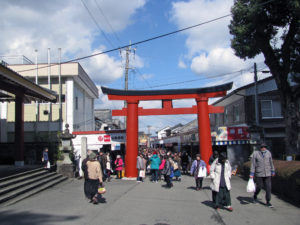 |
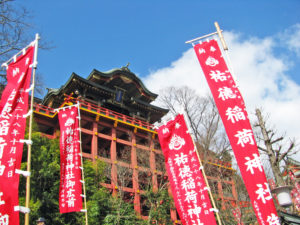 |
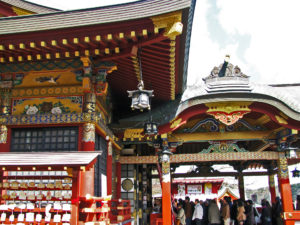 |
It faces the Ariake Sea on the south and is home to Saga Airport.
Saga is known as the plece where it has made a great contribution to the Japanese
Industrial Revolution.
Japan’s Industrial Modernization activity was started here in Saga.
The largest restored wooden building in Japan at 2,500m2, the museum offers the unparalleled
chance to experience a Japanese castle from more than 175 years ago.
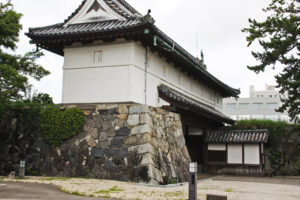 |
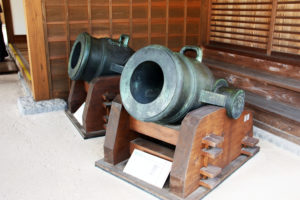 |
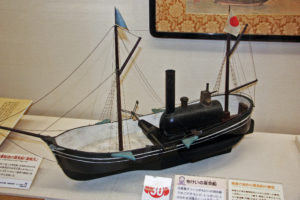 |
The shrine is designated as the special government shrine.
The shrine dedicated to Naomasa Nabeshima, who oversaw the manufacture of Japan’s
first modern Cannon.
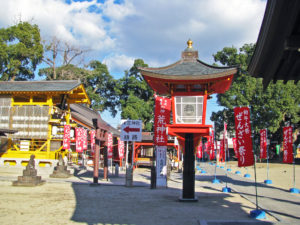 |
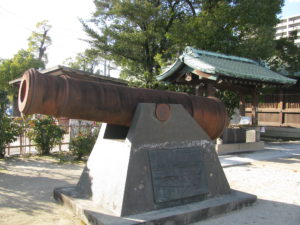 |
World Heritage, Site of Japan’s Meiji Industrial Revolution
Before Meiji Restoration, the Mietsu Naval Dock served as a venue for naval drilling and
maintenance of Western-style ship, as the naval base of Saga Clan.
Japan’s first practical steam ship, the Ryofu-maru was constructed there in 1865.
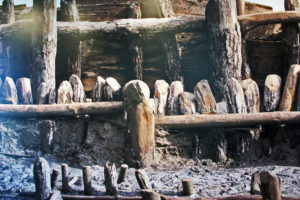 |
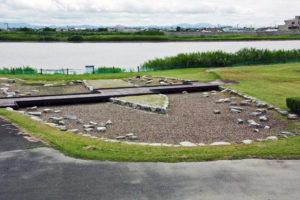 |
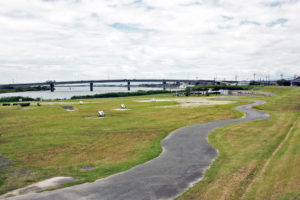 |
Lie on the spacious hilly area in the northeastern part of Saga. Remains of a ringed-dugout settlement
presumably dating back to the 3rd century B.C. were unearthed there, and excavation is still underway
at the site. They are among the largest archeological remains in Japan.
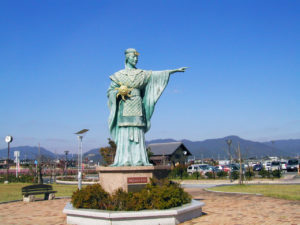 |
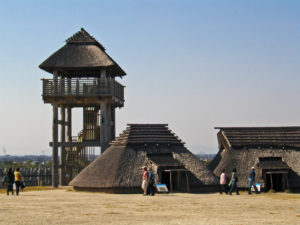 |
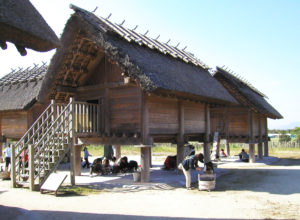 |
Note : we can arrange any other destinations considering your preferences for making
your own plan.
Should you need further information please feel free to contact us.
Your equiry can be sent by selecting the Enquiry Form link below.
You can also contact us by e-mail at info@japan-kyushu-tourist.com
Tel : +81-93-521-8897, Fax : +81-93-521-8898
Address : AIM buiding 6th floor, 3-8-1 Asano, Kokura-kitaku, Kitakyushu-city, Fukuoka-prefecture
Karatsu, Yobuko, Arita, Takeo tour
Where to Explore
Karatsu, Yobuko, Arita and Takeo

General condition
・Departure and disbandment place is in Fukuoka-city
・Chartered vehicle is used
Itinerary
8:30 Depart Fukuoka-city
Transfer to Karatsu using Nishi-kyushu Expressway, 1 hour
Visit Karatsu Castle
transfer to Yobuko and Hado-misaki Cape
Lunch at Yobuko. enjoy fresh Squid
transfer to Arita and visit Arita Porcelain Park
Exploring Takeo
Transfer to Fukuoka using Kyushu Expressway, 1 hour 30minutes
18:00 Arrive at Fukuoka-city
Where to explore
Located on the Higashi Matsuura Peninsula in the northwestern part of Saga-prefecture,
have been prosperous from ancient times as an important point for trade with China.
Town of Fishing industry, famous for Squid and Morning Market called Asaichi.
Yobuko is located northern tip of Saga-prefecture and is facing to Denkai-nada Sea.
A lot of places were as a Shooting location of Thailand drama.
|
Fresh Squid |
Lovers’ sanctuary Cape
The main attractions of Cape Hado are the heart-shaped monument, underwater observation tower,
and the sunset. It is frequented by young couples who take photos in front of the heart monument,
and also by families who hang out at the wide, beautiful grasslands by the sea.
|
Hado-misaki beach |
Heart monument |
The north-west end |
Famous for Arita yaki which is 400-years old porcelain. The piece is bright, elegant pictures
drawn in transparent white porcelain.
 |
 |
 |
Onsen town, has 1300 years history.
Takeo is located in the western part of Saga-prefecture and Takeo’s Onsen waters feel silky
smooth on skin thanks to a high concentration of sodium bicarbonate.
The town was used as a Shooting location of Thailand drama.
Should you need further information please feel free to contact us.
Your equiry can be sent by selecting the Enquiry Form link below.
You can also contact us by e-mail at info@japan-kyushu-tourist.com
Tel : +81-93-521-8897, Fax : +81-93-521-8898
Address : AIM buiding 6th floor, 3-8-1 Asano, Kokura-kitaku, Kitakyushu-city, Fukuoka-prefecture
Kitakyushu study tour / where to visit
Where to visit
Manufacturing companies
Nippon Steel and Sumitomo Metal / Yawata Works
Japan’s first modern steel making company established in Kitakyushu in 1901. Now, becoming
the best steel maker with World-leading capabiities. Process of steel making can be learned to
visit Blast Furnace and Hot rolling mill plants..
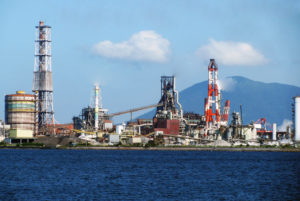 |
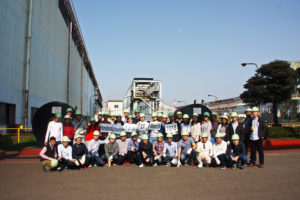 |
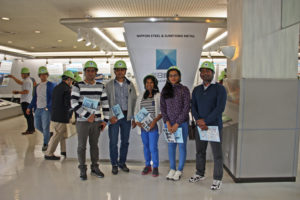 |
World-leading motor and industrial robots manufacturing company established
in Kitakyushu in 1915. The robots are heavy duty industrial robots used in welding, packing,
assembly, painting and other activities.
Robot manufacturing factory and Yaskawa Innovation Center can be visited.
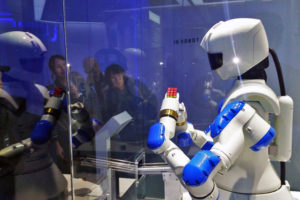 |
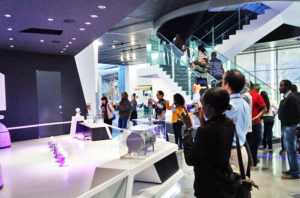 |
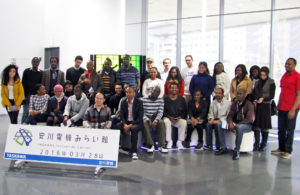 |
The world’s largest toilet manufacturer established in Kitakyushu in 1917.
The company is well-known in Washlet which is an innovative toilet seat that features an
integrated bidet. The sanitary ware manufacturing factory and TOTO Museum can be visited
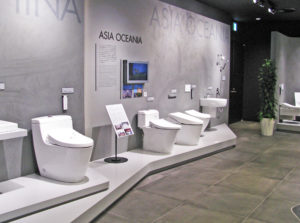 |
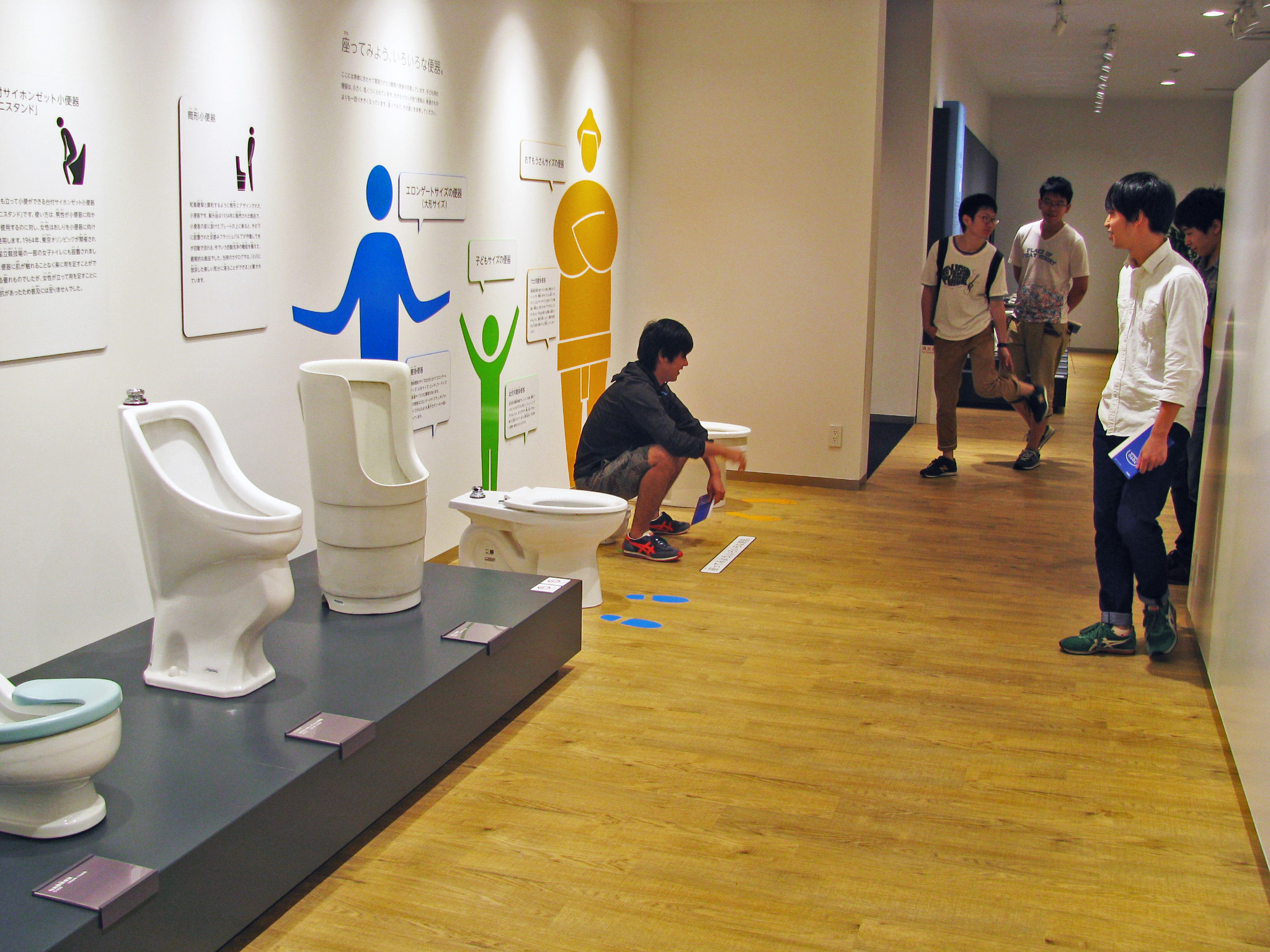 |
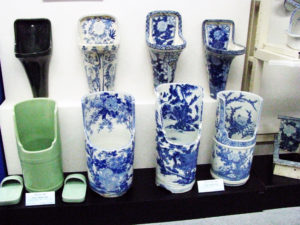 |
The roots of NISSAN is Tobata Casting funded in Kitakyushu in 1911.
The factory was commenced operation in 1975. Now TEANA, X-TRAIL ROGUE, SERENA
and MURANO are being manufactured. The process from assembly of the parts to final
products can be seen.
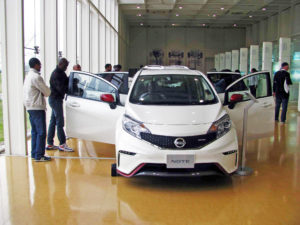 |
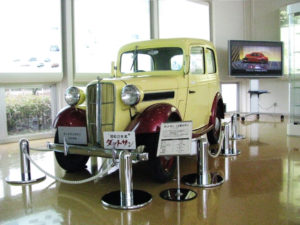 |
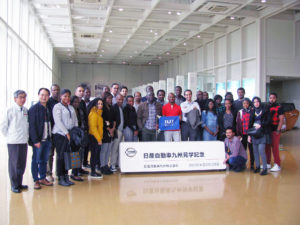 |
Established in 1991, 100% shareholder of Toyota Motor. Major manufactured car is Lexus,
and annual production volume is 430,000 cars. Assembly line and Inspection line are visited
at the factory tour.
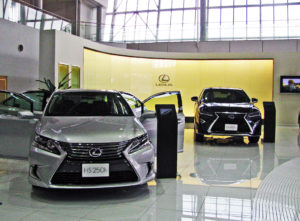 |
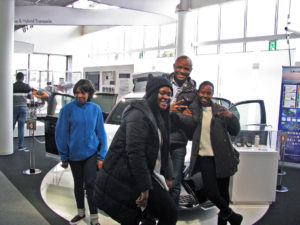 |
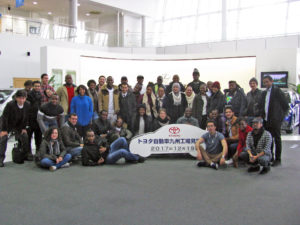 |
Environmental companies and facilities
Eco Project information center that supports the Eco-town. It introduces initiatives and activities
implemented in Eco-town to encourage people to proactively used the facility for such activities
as environmental study sessions and interaction amongst visitors.
 |
 |
 |
Zero Emission Transportation System
The Electric bus driven by the electricity generated by a solar power generation, therefor no global
warming gases emitted from the bus. Operation of the system is commenced in 2015.
The solar power generation plant, the power charging equipment and Electric bus can be observed.
|
Solar Power Generation |
Electric bus |
on the bus |
Japan’s largest Biotope, the Pradise of creatures made over the year in the waste disposal site.
237 kind of birds including circus spinouts listed on the Japan’s endangered species and 284 kind
of vegetation have been confirmed in the Biotope of 41 hectares.
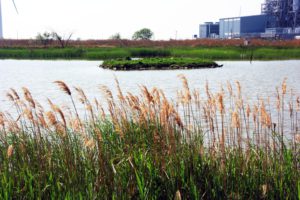 |
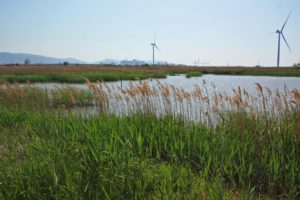 |
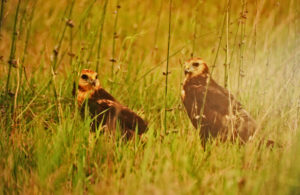 |
Power generation plants
Kyushu Electric Power / Shin-Kokura Plant
Kyushu’s first thermal power plant used LNG and power generation capacity is 1,800,000kw.
Generation of electricity process can be learned by visiting the turbine room, control room and
boiler plant.
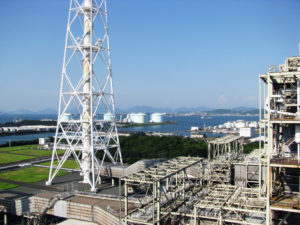 |
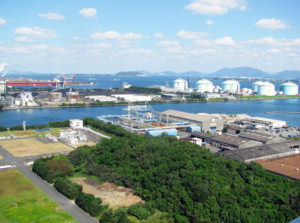 |
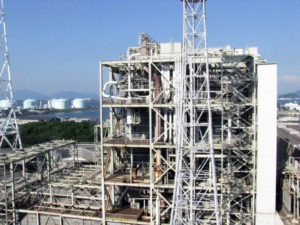 |
The company have been supplying low-cost and reliable electricity for over 60 years.
And research and development of the environmental measurement have been conducted.
New solar power generation and wind power generation systems can be learned.
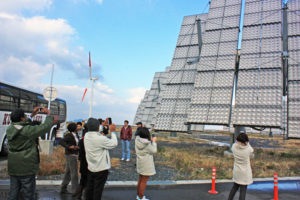 |
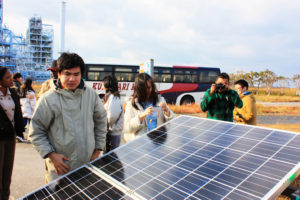 |
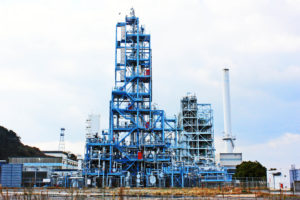 |
Japan’s first wind power generation plant constructed at the coast line facing windy strong
Hibikinada sea. 10 wind power generators line up and total generation capacity is 15,000kw.
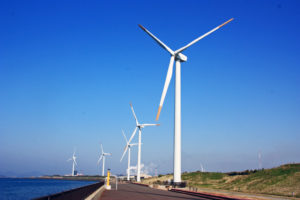 |
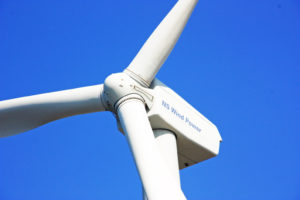 |
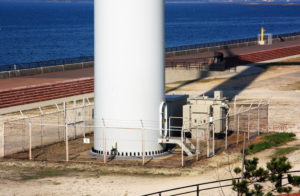 |
Waste treatment and recycling companies and facilities
Plastic PET Bottle recycling / Nishi-Nippon PET Recycling
PET (polyethylene terephthalate) bottles are sorted by municipalities and recycled into
pellets and flakes, which can be used as raw materials for polyester fibers and egg cartons
 |
 |
 |
Melting Furnace / Sin-Moji Plant
The collected waste including metals is melted at over 1,700 degree Celsius in the Melting
Furnace and then the melted slag and metals are discharged.
The slag is used as raw materials for pavement and bricks and the metals are re-used for
other steel products. The process and technology of the Melting Furnace can be learned.
 |
 |
 |
Waste paper recycling / Kyushu Seishi
Refined waste papers is recycled into toilet papers.
Sludge generated during the toilet paper production process is used to produce a
foaming inhibitor used by steel works.
 |
 |
 |
Water treatment plants and facilities
Hiagari Sewage water treatment plant
The sewage come through the sewer pipe is purified in the plant and flow into the sea.
There is an also new technology plant which the electricity is generated using the sludge from sewage.
At the Visitor Center established in 2015, sewage treatment process and technologies can be learned.
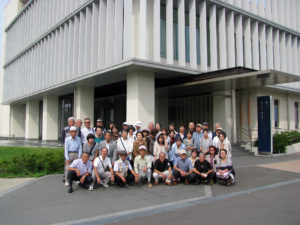 |
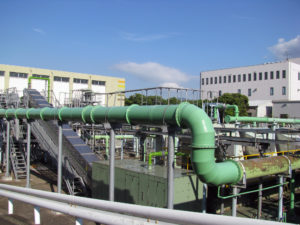 |
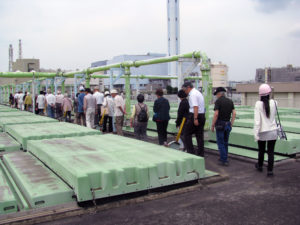 |
The Plant making fresh water from sea water and sewage water established in 2011.
The desalination process and technology can be leared.
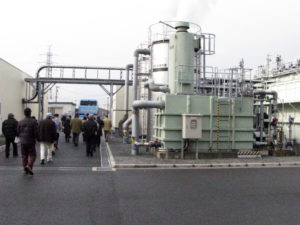 |
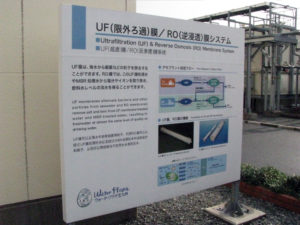 |
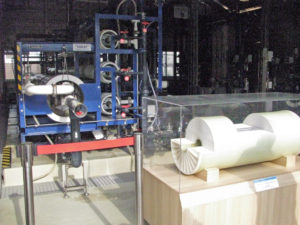 |
Food waste recycle
Merry Corporation
The food waste recycling company that the compost is being produced from food waste discharged
from food factories, hospitals, restaurants and municipal facilities.
 |
 |
Should you need further information please feel free to contact us.
Your equiry can be sent by selecting the Enquiry Form link below.
You can also contact us by e-mail at info@japan-kyushu-tourist.com
Tel : +81-93-521-8897, Fax : +81-93-521-8898
Address : AIM buiding 6th floor, 3-8-1 Asano, Kokura-kitaku, Kitakyushu-city, Fukuoka-prefecture
Environmental Business in Kitakyushu-city
The city is the world’s leading environmental future city after overcoming
serious environmental pollution while it contributed greatly to Japan’s industrial development.
Now it is called industrial and environmental city which is representative of Japan.
Therefore the various things can be learn such as environment, power generation, waste
treatment, recycling and water treatment.
Eco Project information center that supports the Eco-town. It introduces initiatives and activities
implemented in Eco-town to encourage people to proactively used the facility for such activities
as environmental study sessions and interaction amongst visitors.
 |
 |
 |
Zero Emission Transportation System
The Electric bus driven by the electricity generated by a solar power generation, therefor no global
warming gases emitted from the bus. Operation of the system is commenced in 2015.
The solar power generation plant, the power charging equipment and Electric bus can be observed.
|
Solar Power Generation |
Electric bus |
On the Electric bus |
●Power generation plants
Kyushu Electric Power / Shin-Kokura Plant
Kyushu’s first thermal power plant used LNG and power generation capacity is 1,800,000kw.
Generation of electricity process can be learned by visiting the turbine room, control room and
boiler plant
 |
 |
 |
The company have been supplying low-cost and reliable electricity for over 60 years.
And research and development of the environmental measurement have been conducted.
New solar power generation and wind power generation systems can be learned.
 |
 |
 |
Japan’s first wind power generation plant constructed at the coast line facing windy strong
Hibikinada sea. 10 wind power generators line up and total generation capacity is 15,000kw.
 |
 |
 |
●Waste treatment and recycling companies and facilities
Plastic PET Bottle recycling / Nishi-Nippon PET Recycling
PET (polyethylene terephthalate) bottles are sorted by
municipalities and recycled into pellets and flakes, which can
be used as raw materials for polyester fibers and egg cartons
 |
 |
 |
Melting Furnace / Sin-Moji Plant
The collected waste including metals is melted at over 1,700 degree Celsius in the Melting
Furnace and then the melted slag and metals are discharged.
The slag is used as raw materials for pavement and bricks and the metals are re-used for
other steel products. The process and technology of the Melting Furnace can be learned.
 |
 |
 |
Waste paper recycling / Kyushu Seishi
Refined waste papers is recycled into toilet papers.
Sludge generated during the toilet paper production process is used to produce a
foaming inhibitor used by steel works.
 |
 |
 |
●Water treatment plants and facilities
Hiagari Sewage water treatment plant
The sewage come through the sewer pipe is purified in the plant and flow into the sea.
There is an also new technology plant which the electricity is generated using the sludge from sewage.
At the Visitor Center established in 2015, sewage treatment process and technologies can be learned.
 |
 |
 |
The Plant making fresh water from sea water and sewage water established in 2011.
The desalination process and technology can be leared.
 |
 |
 |
●Food waste recycle
Merry Corporation
The food waste recycling company that the compost is being produced from food waste
discharged from food factories, hospitals, restaurants and municipal facilities.
 |
 |
Should you need further information please feel free to contact us.
Your equiry can be sent by selecting the Enquiry Form link below.
You can also contact us by e-mail at info@japan-kyushu-tourist.com
Tel : +81-93-521-8897, Fax : +81-93-521-8898
Address : AIM buiding 6th floor, 3-8-1 Asano, Kokura-kitaku, Kitakyushu-city, Fukuoka-prefecture
Environmental improvement history of Kiyakyushu
The city once experienced the worst air pollution in Japan
Saw Dokai Bay turned into a “sea of death.” But it regained blue skies after
overcoming its pollution problem by the efforts of city, companies as well
as the women’s association.
Kitakyushu City, once known as a “town of pollution,” now plays the role of the driving
force in creating a recycling-oriented society in Japan making use of the experience
and know-how it accumulated in the process of overcoming its pollution in order to
provide international cooperation.
The city grew as an industrial city after the establishment of Yawata Steel Works in 1901.
It led Japan during the period of modernization and high economic growth with a focus
placed on heavy industry.
Back then, plumes of smoke coming out of the steelworks were referred to as
“seven-colored smoke” which was sung as part of the lyrics of the song of former
Yahata City as it was regarded as a symbol of prosperity. However, the prosperity
of industries brought about severe pollution and quite naturally the “seven-colored
smoke” polluted the air and caused dust deposition.
In the 1960s, air pollution in the Kitakyushu area was the worst in Japan and Dokai
Bay was turned into a “sea of death” due to effluent from factories.
It was citizens who first noticed this problem of pollution. The city started to hear the
voices of its residents saying such things as, “my house is becoming sandy” and
“the laundry gets dirty” from around 1950. The Women’s Association in Tobata area
stood up, investigated the problem themselves and asked the council, administration
and companies to take measures against pollution. ‘I Want Blue Sky’, a documentary
film produced by the Tobata Women’s Association in 1965 was what symbolized the
citizens’ campaign calling for measures against pollution.
Pushed by the voices of its citizens, the Kitakyushu administration started to take action
to grasp the actual situation by measuring the level of air pollution. It then gave
instructions and conducted on-site inspections at these companies urging them to take
measures to improve the situation. Finally, the city concluded a pact on pollution
prevention with each plant and established the Council on Air Pollution Prevention
made up of the city, Fukuoka Prefecture, then Regional Bureaus of International
Trade and Industry and about 30 companies in the city. These companies
responded by putting pollution control facilities in place as well as improving the process
of production.
In the meantime, the Air Pollution Control Act and Noise Regulation Act came into
force in 1968 and the following year, in 1969, a smog alert was issued for the first
time in Japan.
Fourteen pollution control related bills passed the so-called ‘Pollution Diet’ in 1970.
Thus, public concern towards pollution problems grew high throughout Japan while in
Kitakyushu, the city and companies worked hand in hand to tackle the pollution
problem which resulted in rapid improvement in the environment.
As a result, by around 1980, the blue sky came back to the town once covered with ‘
seven-colored smoke.’ Furthermore, over 100 species of fish live in Dokai Bay which
was once nicknamed the ‘sea of death’ where not even bacteria could live.
In 1985, the Organization for Economic Co-operation and Development (OECD)
introduced Kitakyushu in its White Paper on the environment as a city that transformed
itself from a ‘Gray Town’ into a ‘Green Town.’ Also the city was selected as one of the
‘Starry Towns’ with a favorable atmospheric environment in the ‘Starry Town Contest’
held by the Environment Agency in 1987.
These initiatives by Kitakyushu City are highly recognized by the global society. In 1990,
the city received the ‘Global 500 Award’, which is given by the UN Environment
Program (UNEP) to individuals and organizations that combat environmental issues,
and was the first local government to win the Award in Japan. At the Earth Summit
held in Rio de Janeiro, Brazil in 1992, Kitakyushu City was honored with the ‘Local
Government Honors Award. The city is the only local government to win the Award
in Japan.

In addition, the initiative towards a better environment was enhanced and it started the
sorted collection of cans and bottles in 1993. In 1998, a system in which residents are
obliged to use designated plastic bags for municipal waste started. In 2001,
‘Kitakyushu Expo-Festival 2001’ with the environment as a theme was held at
Higashida area, an idle land owned by Nippon Steel Corporation, where infrastructure
improvement work was going on based on the concept of ‘Kitakyushu Renaissance.
Then, the concept of a ‘Green Village’ in Yahata Higashida began in 2003.
Thus, efforts towards a better environment advanced further.
As mentioned above, Kitakyushu was recognized as the ‘Environmental Model City’
together with 12 other local governments in 2008. The ‘Kitakyushu Asian Center for
Low Carbon Society’ was opened in 2010, and in 2011 the city was selected as a
‘Environmental Future City’ and also as the first ‘Model City for Green Growth’ in
Asia by the Organization for Economic Co-operation and Development (OECD).
A new challenge as the driving force towards realizing a global low carbon society
has started in Kitakyushu City where Japanese industry started.
Should you need further information please feel free to contact us.
Your equiry can be sent by selecting the Enquiry Form link below.
You can also contact us by e-mail at info@japan-kyushu-tourist.com
Tel : +81-93-521-8897 , Fax : +81-93-521-8898
Address : AIM buiding 6th floor, 3-8-1 Asano, Kokura-kitaku, Kitakyushu-city, Fukuoka-prefecture

